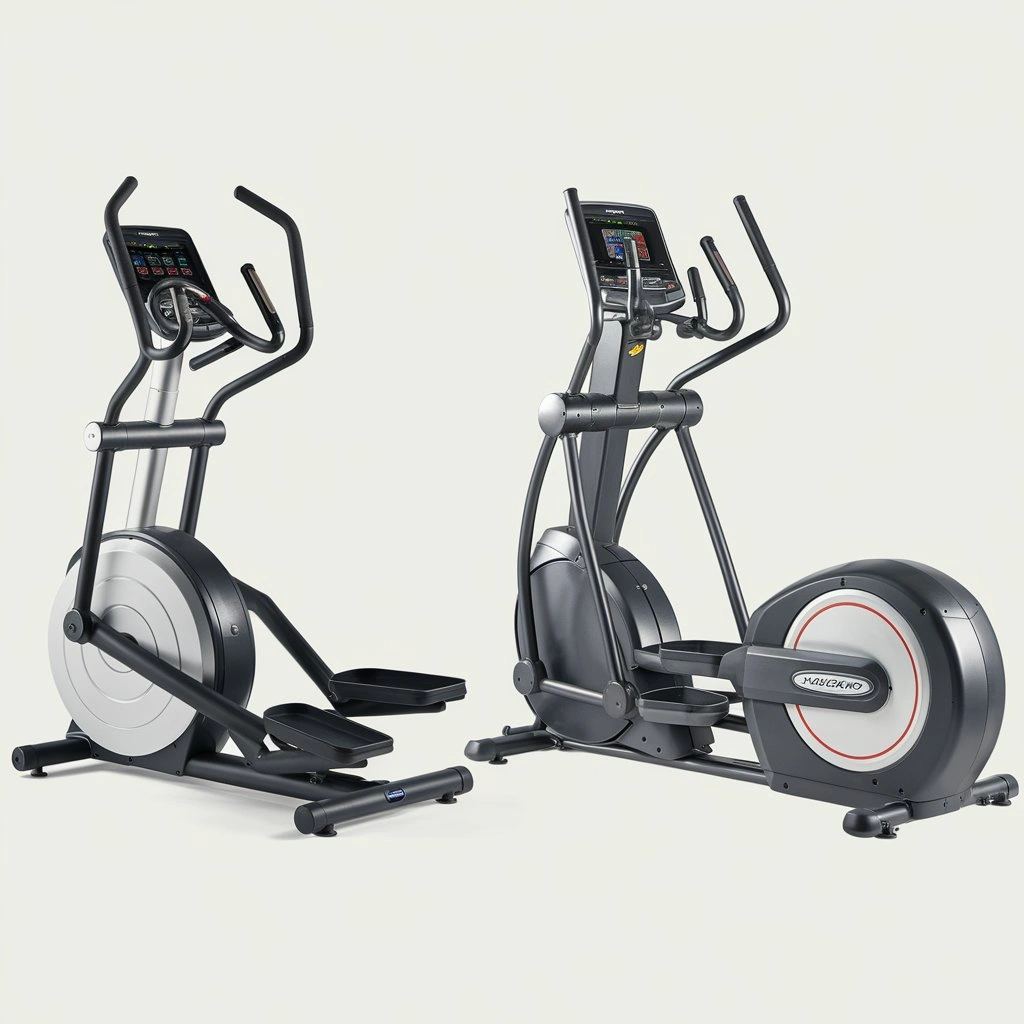So, you’re ready to get in shape and have your pick of awesome gym equipment! But with all those machines, choosing the right one can be tricky. Two popular options are the cross trainer vs elliptical.
Both give you a Great Workout, but they have some key differences. This guide will break down what each machine is and help you pick the perfect match for your fitness goals!
Fitness Friends: Cross Trainer vs Elliptical Explained
Imagine a machine that mixes running, climbing stairs, and skiing. That’s the cross-trainer! The pedals move in an elliptical path. They mimic your natural running motion but have a low impact on your joints. Your arms move on handlebars, giving you a full-body workout.
The elliptical is like a close cousin. It also has foot pedals that move in an oval path but stay fixed while you move your legs. This gives a smoother motion, great for low-impact cardio. Some ellipticals have moving handlebars for an upper-body workout too.
Finding Your Perfect Fit: Why Choosing the Right Machine Matters
Choosing the right equipment can make all the difference in your workout journey. Here’s why it’s important:
- Enjoyment is Key: If you don’t like the machine, you’re less likely to use it! Finding one you find fun will keep you motivated.
- Targeting Your Goals: Different machines work different muscle groups. Picking the right one helps you reach your fitness goals. It could be for building muscle, burning calories, or improving cardio.
- Listening to Your Body: Some people prefer a low-impact workout. Others want more intensity. Choosing a machine that suits your fitness level and any injuries you might have is crucial.
Now that you know the basics, get ready to dive deeper into the world of cross-trainers and ellipticals! We’ll look at their unique features. We’ll also see how they affect your workout. And, we’ll see who each machine is best for. Let’s find the perfect fit for your fitness journey!
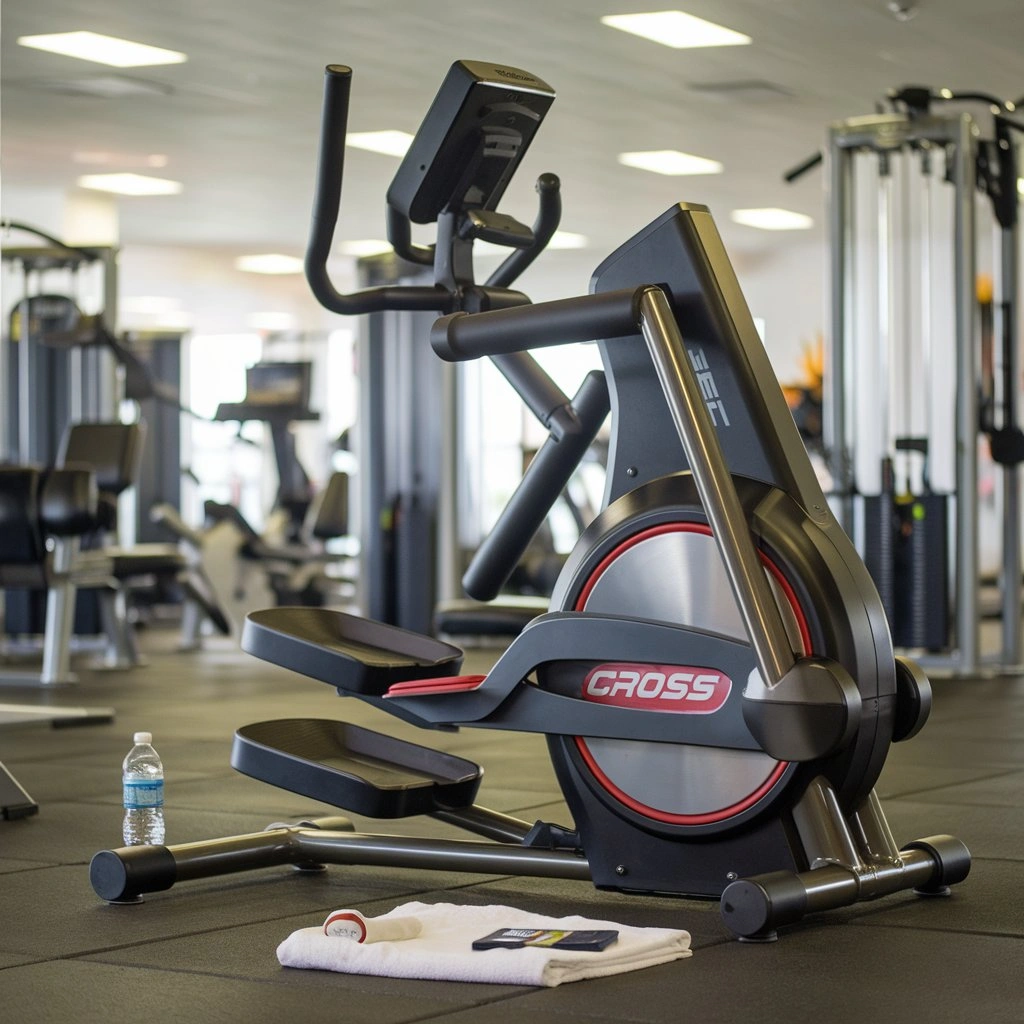 Overview of Cross Trainer
Overview of Cross Trainer
The gym can be a jungle of equipment, each promising a different path to fitness glory. But the cross trainer might be for you if you want a machine that gives a low-impact, full-body workout. Let’s delve into what this machine is all about, its key features, and the many benefits it offers.
Definition and Functionality: Stepping Up Your Fitness
A cross trainer, also called an elliptical trainer, is a stationary exercise machine. It copies the natural motion of walking, running, or climbing stairs. Imagine a machine that has the benefits of these three exercises. It does not have a jarring impact on your joints. That’s the magic of the cross-trainer!
Here’s how it works: You stand on foot pedals. They move in an elliptical path, mimicking your running stride. Unlike a treadmill, your feet never leave the pedals, making it a low-impact exercise. Most cross trainers have moving handlebars. You push and pull them with your legs. This engages your upper body muscles, giving you a full-body workout.
Key Features and Components: Demystifying the Machine
Now, let’s get familiar with the key parts of a cross-trainer:
- Foot Pedals: These provide a stable platform for your feet and move in an elliptical path. Some models allow you to adjust the stride length to match your height and leg length.
- Handlebars are moving arms. They let you work your chest, shoulders, and back. Some models have handlebars that don’t move. They are for those who only want to focus on their legs.
- Resistance System: This allows you to adjust the difficulty of your workout. Higher resistance makes your legs work harder. It’s perfect for building muscle or burning calories.
- This digital display tracks your workout metrics. It shows time, distance, calories, and heart rate. Some consoles offer pre-programmed workouts for variety.
Advantages of Using a Cross Trainer: A Multitude of Benefits
The cross trainer has many advantages. It is popular with people of all fitness levels.
- Low-Impact Exercise: The cross trainer minimizes impact on your joints, unlike running or jumping.
This makes it a great option for people with joint pain, injuries, or those who are overweight.
2. A full-body workout engages your legs and arms at the same time. It gives a complete workout, toning and strengthening big muscle groups.
3. Cardiovascular Benefits: Cross-training is a fantastic way to improve your cardiovascular health. By increasing your heart rate, you can enhance your stamina and fitness.
4. Calorie Burning: A tough workout on a cross trainer can burn many calories. This can help you reach your weight loss goals.
5. Customizable Workouts: Some models have adjustable resistance levels and pre-programmed workouts. They let you tailor your exercise routine to your fitness goals and preferences.
6. Easy to Use: The cross trainer is a machine. Even beginners can get comfortable with the smooth motion and intuitive controls.
7. Versatility: The cross trainer offers a variety of workouts. You can choose a low-intensity session for rest. Or, you can choose a high-intensity interval training (HIIT) workout for a challenge.
8. Low Maintenance: Cross trainers are generally low-maintenance machines requiring minimal upkeep.
9. Entertainment options are common in many consoles. They include built-in TVs or music players. They keep you motivated during your workout.
10. Cross trainers are more compact than some gym equipment. They are a good choice for home gyms or those with limited space.
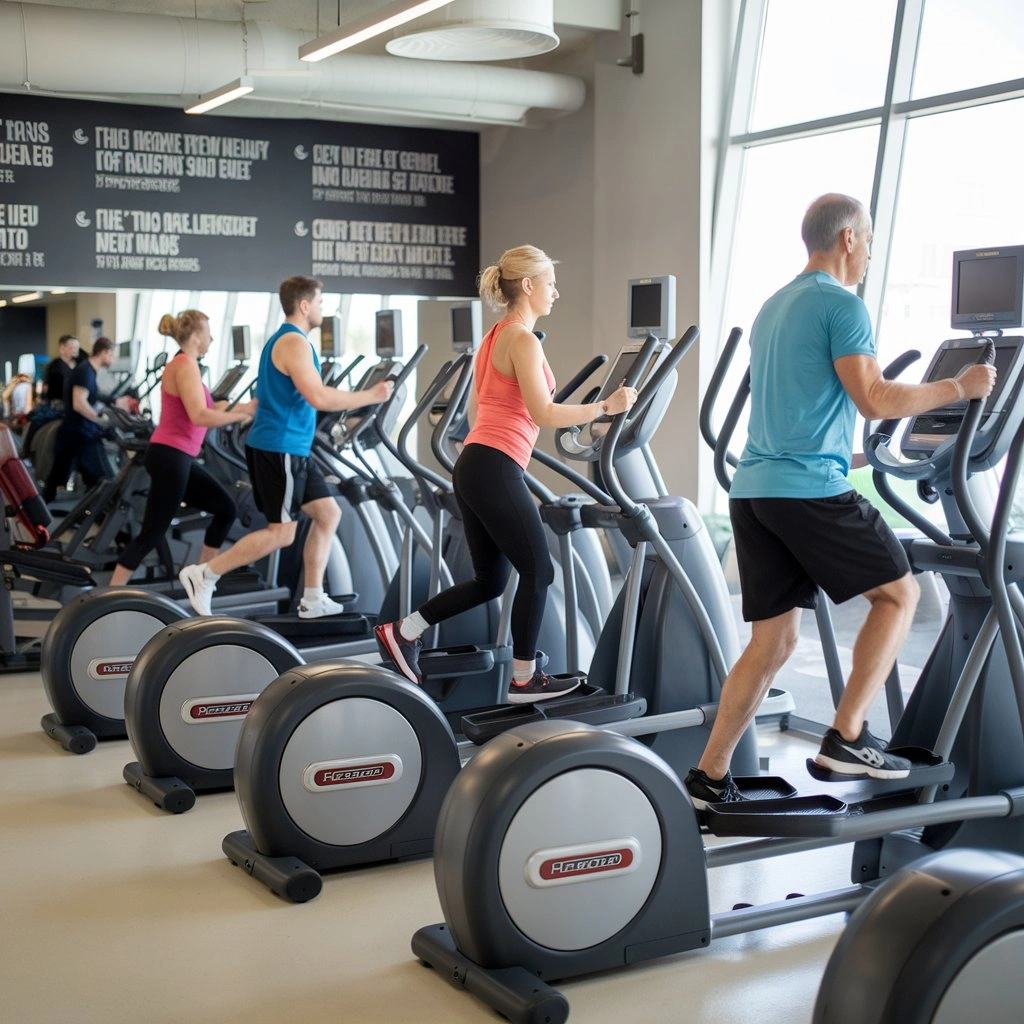 Overview of Elliptical Machine
Overview of Elliptical Machine
People looking for a low-impact, cardio-boosting workout often use the elliptical machine. Many people of all fitness levels love this gym equipment. It provides a smooth, controlled exercise experience. Let’s explore what an elliptical machine is. We’ll look at its key features and the many advantages it offers.
Definition and Functionality: A Gliding Path to Fitness
An elliptical machine is also called a cross-trainer, though there are subtle differences. It is a stationary exercise machine. Designed to simulate low-impact running or walking. It does so without stressing your joints.
Here’s how it works: You stand on foot pedals that move in an oval path, mimicking a running stride. Unlike a treadmill, your feet never leave the pedals. They provide a smooth, unbroken motion. Ellipticals offer many stride lengths.
You can adjust the exercise to target different muscles or match your leg length. Most ellipticals lack moving handlebars. But, some have stationary or moving handles for upper body engagement.
Key Features and Components: Demystifying the Elliptical
Now, let’s get familiar with the essential parts of an elliptical machine:
- Foot Pedals provide a stable platform for your feet. They move in an oval path. Some models allow you to adjust the stride length for comfort. You can also target specific muscle groups.
- This digital display tracks your workout metrics. It shows time, distance, calories, and heart rate. Some consoles offer pre-programmed workouts for variety and goal-specific training.
- Resistance System: This allows you to adjust the difficulty of your workout. Higher resistance levels make your legs work harder. They are great for building muscle or burning more calories.
- Some ellipticals have moving handlebars. They are not standard on all models. This allows you to engage your upper body muscles for a more complete workout.
Advantages of Using an Elliptical Machine: A Symphony of Benefits
The elliptical machine has many advantages. It is popular for different fitness goals.
1. Low-Impact Exercise: The key benefit of an elliptical is the minimal impact on your joints. This makes it a great option for people recovering from injuries. It works for those with joint pain or for people who are overweight.
2. Cardio Champion: Elliptical training is a fantastic way to improve your cardiovascular health. It elevates your heart rate, leading to increased stamina and fitness.
3. An elliptical is a calorie-burning machine. It can burn many calories in a vigorous workout. This can help you reach your weight loss goals.
4. Customizable Workouts: You can adjust the resistance on some models. They also have pre-programmed workouts. These features let you tailor your routine to your fitness level and preferences.
5. Design: Ellipticals are generally easy to use. Even beginners can get comfortable with the smooth motion and intuitive controls.
6. Smooth and Quiet Operation: Compared to treadmills, ellipticals are quieter machines. This makes them a good option for home gyms or shared workout spaces.
7. Ellipticals are compact compared to some gym equipment. This makes them a good choice for home gyms or those with limited space.
8. Entertainment Options: Many consoles offer built-in TVs or music players. They help to keep you motivated during your workout.
9. Elliptical training can help improve your coordination. It does this by requiring you to move your arms and legs in sync.
10. Ellipticals are like cross trainers. They need little upkeep and are low maintenance.
Comparison of Cross Trainer and Elliptical Machine
The world of exercise equipment can be overwhelming. This is especially true when faced with similar options. For example, cross trainers and elliptical machines. Both machines offer low-impact cardio workouts.
But, small differences can affect your workout. Let’s compare these machines in detail. This will help you pick the perfect one for your fitness goals.
Design and Construction: A Glimpse Under the Hood
- Cross Trainer: This machine has independent, moving handlebars. They mimic the pushing and pulling motion of running or skiing. The foot pedals move in an elliptical path, like an elliptical machine. Some models offer adjustable stride lengths to target different muscle groups. Cross trainers tend to be sturdier due to the extra moving parts.
- The elliptical machine has stationary handlebars. They give support while you focus on moving your legs. The foot pedals move in a continuous elliptical path, replicating a running motion. Some models offer adjustable stride lengths. But, these are rarer on cross trainers. Ellipticals tend to have a smoother, more streamlined design.
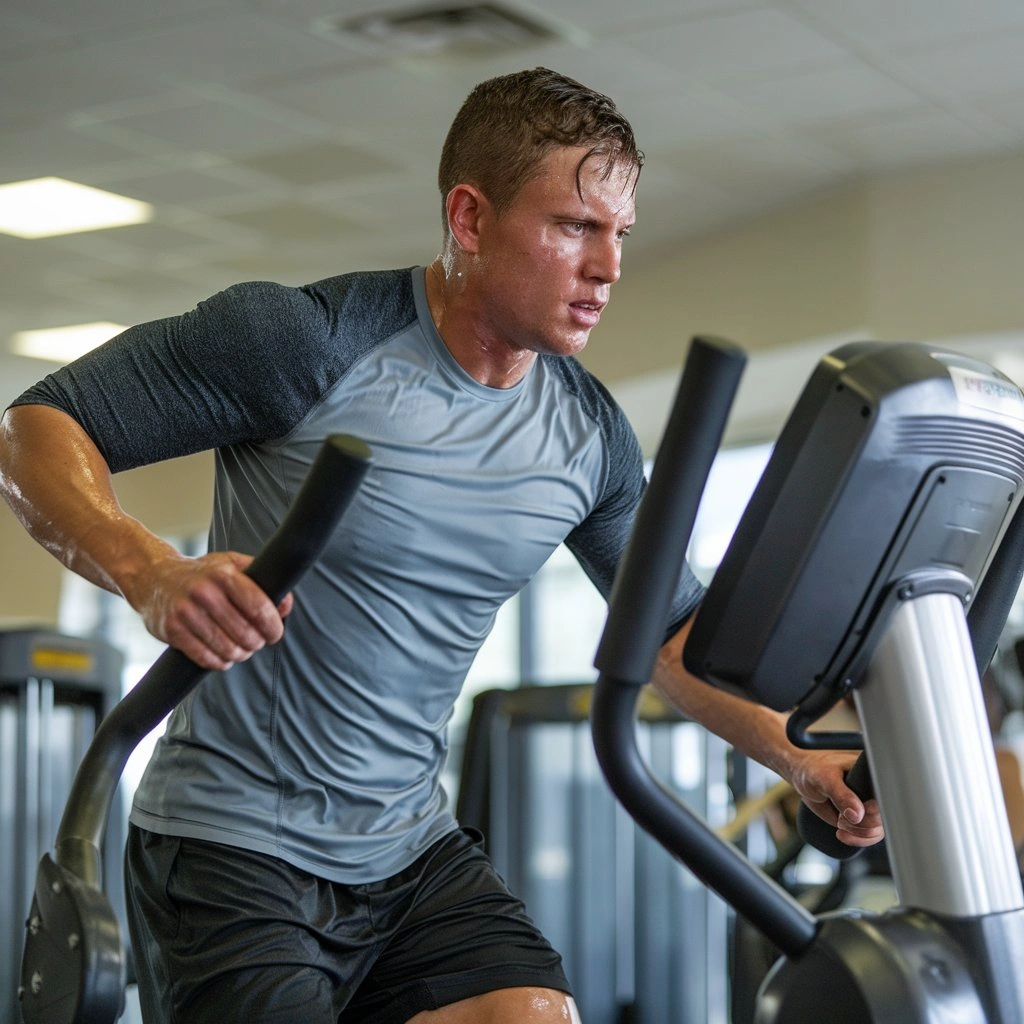 Workout Experience and Muscle Engagement: A Tale of Two Movements
Workout Experience and Muscle Engagement: A Tale of Two Movements
- A cross trainer has moving handlebars. They work your upper body muscles (chest, shoulders, back, and biceps). They also work your lower body (quads, hamstrings, glutes). This offers a more complete workout, building strength and endurance. The handlebars move. This allows for pushing and pulling. It adds variety to your workout.
- The Elliptical Machine focuses on your lower body muscles. These are the quads, hamstrings, and glutes. Some models offer stationary handlebars for light upper-body engagement. But, it’s minimal compared to a cross-trainer. The elliptical provides a smoother, more even motion. It is ideal for those seeking a low-impact cardio workout.
Impact on Joints and Injury Prevention: Stepping Lightly Towards Fitness
- Cross Trainer: The low-impact design minimizes stress on your joints. It is great for people recovering from injuries. It also helps those with joint pain or overweight individuals. But, the independent movement of the handlebars requires good coordination and balance.
- The elliptical machine is like the cross trainer. It offers a low-impact workout that reduces stress on your joints. The smooth, continuous motion is particularly gentle on your knees and ankles. The fixed handlebars add stability. They make it a good choice for beginners or those with balance concerns.
Customization and Resistance Levels: Tailoring Your Workout
- Most models have adjustable resistance. You can use it to customize the intensity of your workout. You can use it for building muscle or burning calories. Some advanced models come with pre-programmed workouts for specific fitness goals. The handlebars move. This allows for pushing and pulling. It adds variety to your workout.
- Elliptical machines have adjustable resistance levels on most models. You can use them to personalize your workout intensity. Some ellipticals offer pre-programmed workouts, like cross trainers. But, you get fewer customization options. This is because there are no moving handlebars on ellipticals.
Space and Cost Considerations: Finding the Right Fit for Your Home
- Cross Trainer: They tend to have a larger footprint than ellipticals. This is because of the moving handlebars. But, some foldable models offer a space-saving solution. The price of cross trainers can vary by features. But, they usually cost as much as ellipticals.
- Elliptical machines have a compact design. This makes them perfect for home gyms with limited space. Many models are foldable for more space-saving benefits. The price range for ellipticals is like that for cross trainers. It offers options for various budgets.
Choosing Your Perfect Match: A Final Step to Fitness Success
The best choice is between a cross trainer and an elliptical machine. It depends on your needs and fitness goals:
- For a complete workout: Cross Trainer
- For low-impact cardio: Elliptical Machine
- For injury prevention and balance: Elliptical Machine
- For upper body engagement: Cross Trainer
- For variety in movement: Cross Trainer
- For space-saving: Elliptical Machine
User Considerations and Preferences
When it comes to exercise equipment, a one-size-fits-all approach rarely exists. Choosing the right machine depends on user considerations and preferences. This ensures you enjoy the process and meet your fitness goals. Let’s explore three factors. You should consider them when picking the perfect exercise equipment for you:
Fitness Goals and Objectives: Setting the Course for Success
Before diving into a sea of equipment options, take a moment to define your fitness goals. What are you hoping to achieve? Here are some common goals and the considerations they call for:
- Both cross trainers and ellipticals are great at burning calories. But, if building muscle is also a goal. A cross trainer with moving handlebars offers a fuller workout.
- Cardiovascular Health Improvement: Both machines are excellent for boosting your cardiovascular health. Ellipticals might be easier on beginners. Cross trainers offer a more intense cardio workout with the moving handlebars.
- Cross trainers provide a clear advantage for muscle building and toning. They engage both your upper and lower body. Ellipticals work lower body muscles. Some models have moving handlebars for the upper body.
- Injury Prevention and Rehabilitation: Both machines offer gentle workouts. They are ideal for those recovering from injuries or with joint pain. Ellipticals might have a slight edge. They have smoother, continuous motion that reduces stress on knees and ankles.
By understanding your goals, you can narrow your choices. Then, you can select equipment that supports your fitness journey.
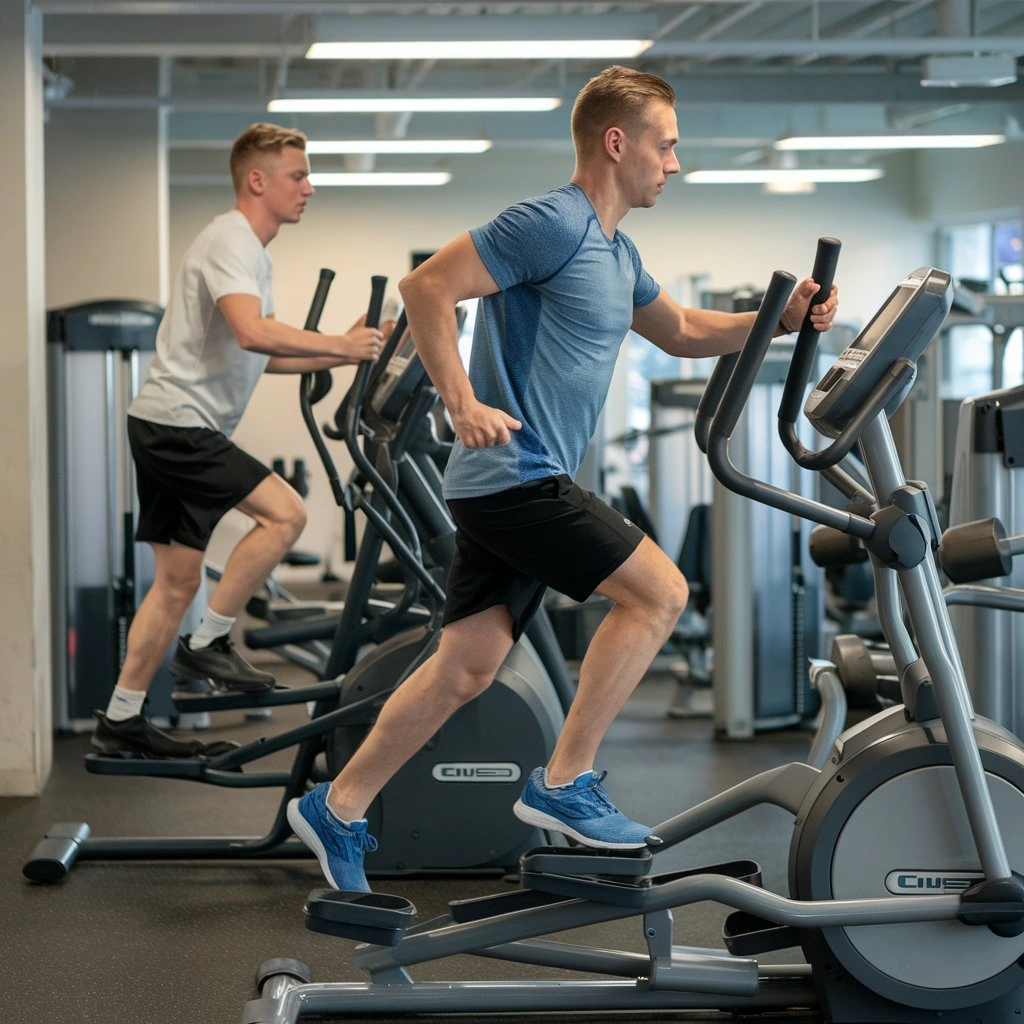 Personal Comfort and Experience: Making Exercise Enjoyable
Personal Comfort and Experience: Making Exercise Enjoyable
Exercise should be enjoyable, not a chore. Here’s where personal comfort and experience come into play:
- Using cross-trainers requires more coordination. This is because the handlebars move. If you’re a beginner or have balance concerns, you might prefer an elliptical. It has stationary handlebars.
- Some machines offer adjustable stride lengths. This lets you find the most comfortable and effective motion for your leg length. Trying out different machines is crucial to find the best fit.
- Seat Availability: Some ellipticals offer a seat option for added support during workouts. This can help people with limited mobility. It also benefits those who prefer less intense exercise.
- Ellipticals are quieter than cross trainers. This is due to the lack of moving handlebars. This might be a consideration for those working out in a shared space or a home gym.
Consider your comfort and past exercise experiences. Use this to make informed decisions about which machine will be most enjoyable. It will help you stick with your exercise routine.
Accessibility and Availability: Finding a Perfect Fit in Your Life
Finally, it’s important to choose equipment that fits into your life:
- Space Constraints: Ellipticals have a smaller footprint compared to cross trainers. If space is a premium at home or the gym, an elliptical might be the better choice.
- Budget: Both machines come in a variety of price ranges depending on features and brands. Set a budget and explore models within that range to find the best value for your money.
- Gym Availability: Some gyms might not have both options available. Checking your gym’s equipment selection beforehand can help you narrow down your choices.
- Time Constraints: Consider how much time you have to dedicate to exercise. Both machines offer efficient workouts. But, ellipticals can give a faster cardio workout if time is short.
Know your accessibility and availability limits. Then, choose gear that is easy to get and fits your life.
Conclusion
The battle between cross trainers and ellipticals might seem confusing. But, the key differences are easy to understand. Both machines offer gentle workouts. You can adjust the resistance. This makes them great for all fitness levels.
The key difference lies in the handlebars. Cross trainers have moving handlebars, engaging your upper body for a complete workout. Ellipticals have stationary handlebars, focusing on lower body muscles. Cross trainers might need more coordination, while ellipticals offer a smoother motion.
So, which machine is right for you?
For a complete workout with upper body engagement, choose the cross trainer. The elliptical provides low-impact cardio. It is great for beginners or those with balance concerns.
The best machine is the one you enjoy using. Trying them out at the gym will help you find the most comfortable option. You might want a full workout or a smooth cardio experience. Both cross trainers and ellipticals can help you on your path to fitness success!

